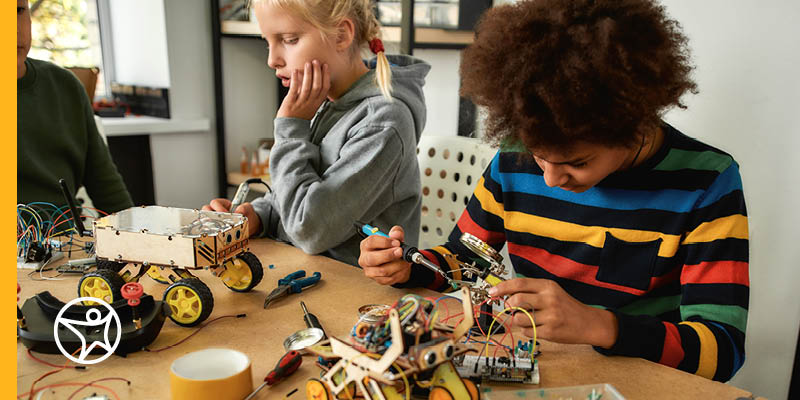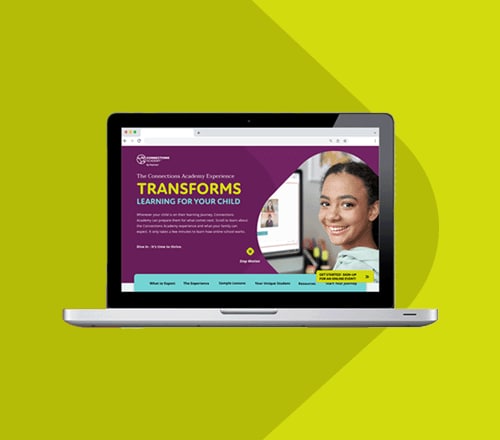How to Use Inquiry-Based Learning to Your Student’s Benefit
byElizabeth Preston
5 min to read
There are numerous ways to approach teaching students and, as a parent or Learning Coach, you may feel at a loss as to where to start. A good place to begin is by understanding that high-quality curriculums often include some aspect of inquiry-based learning. So, it’s critical to understand what is inquiry-based learning, the benefits of inquiry-based learning, and how you can use this teaching method to support student’s education.
What is Inquiry-Based Learning?
Inquiry-based learning is a student-centered teaching method that encourages students to ask questions and investigate real-world problems. It often enables students to connect what they are learning in school to the real world. The heart of inquiry-based learning is that students identify a question, problem, or topic that is rooted in the real world; they investigate the issue by using their critical-thinking and problem-solving skills; and they generate possible solutions or answers to questions and problems.
One way to define inquiry-based learning is to look at four types of inquiry:
- Confirmation Inquiry. A confirmation-inquiry approach starts with the answer to a question. Then, students work backwards to see if the answer is logical and acceptable.
- Guided Inquiry. In a guided-inquiry approach, instructors lead students through the inquiry process, help them to ask useful questions, and aid them in finding solutions to problems. This is often used in elementary and middle school classes as students are learning the basics of problem solving and critical thinking.
- Open Inquiry. This free-form approach is often seen in the humanities to explore a concept in-depth or to engage in a debate. It involves students exploring their interests and asking questions about a topic they are studying. Open inquiry is therefore largely student driven. A parent or Learning Coach may guide students to a topic, but the students themselves ask the questions.
- Structured Inquiry. A structured inquiry is when a student is given a problem and the student investigates the problem by using a structure or format. This is frequently seen when students use a scientific process to investigate an issue. Structured inquiry often lends itself to the sciences and to problems that require a type of sequential process.
A curriculum can focus on one of the types of inquiry, or it can use a mixture of types.
Benefits of Inquiry-Based Learning
There are several benefits to incorporating inquiry-based learning into your child’s education. Some of these benefits include:
- It keeps students engaged. With inquiry-based learning, students are encouraged to question and interact with information. So, inquiry-based learning is an active and engaging way of learning about the world.
- It encourages students to improve their critical thinking. Inquiry-based learning helps students to examine problems and information critically. Students do not passively accept information. Rather, they engage with it and investigate to see if that information makes sense and why it may or may not be logical through the lens of critical thinking.
- It gives students opportunities to hone their problem-solving skills. Inquiry-based learning encourages students to practice their problem-solving skills often asking them to identify a problem in the world and come up with a solution.
- It encourages creativity. With an inquiry-based approach to learning—particularly with open inquiries and structured inquiries—students are given opportunities to examine problems on their own, often encouraging them to think creatively and not to be afraid of “out-of-the-box” answers.
- It helps students to explore complex concepts. By dissecting problems and understanding all aspects of issues, students get exposure to real life’s complexities. Many problems are not always easily identified or solved. Rather, life can be messy, nuanced, and complicated, and inquiry-based learning is a great way to introduce students to this concept.
- It highlights the relevancy of schoolwork. One of the best ways to keep students engaged and motivated to learn is to demonstrate how their schoolwork connects to the real world. If students understand that they can use what they are learning to solve real-world problems and make a positive difference, then they may be inspired and motivated to keep learning.

Inquiry-Based Learning Ideas
There are several ways for students to practice inquiry-based learning in school. Here are some inquiry-based learning examples:
1. Debate an issue.
Try debating an issue with your student. The student can pick the side that they are passionate about or ask the student to argue for the side they do not agree with. Defending a position they do not agree with often encourages them to delve deeper into the topic and explore the different sides involved. Debate helps students use their critical-thinking skills to investigate the topic and be able to articulate their thoughts clearly. Guided inquiry may be best for young learners still learning how to debate, and open inquiry or confirmation inquiry may be best for more academically advanced students.
2. Search for a problem.
Ask your student to identify a problem that they want to fix. This problem could be one that the student faces each day, one that connects with the student’s passions, or one that relates to the student’s desired career. Then, ask the student to find out why that issue is a problem and ask them to explore some possible solutions. This is best conducted under open inquiry, structured inquiry, or guided inquiry. Students may also consider creating an invention to solve the problem.
3. Conduct a science experiment.
Science experiments are great opportunities for students to practice guided inquiry or structured inquiry. Take a look at our article on how to help your child create a successful science fair project for some interesting ideas.
Inquiry-based learning helps students become better problem solvers and critical thinkers. It also encourages students to think creatively and to be engaged with their schoolwork.



